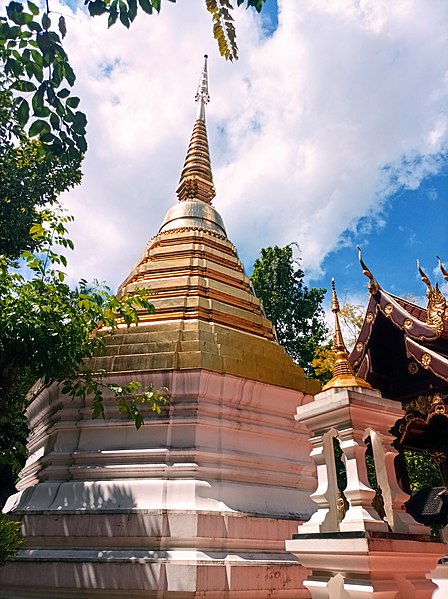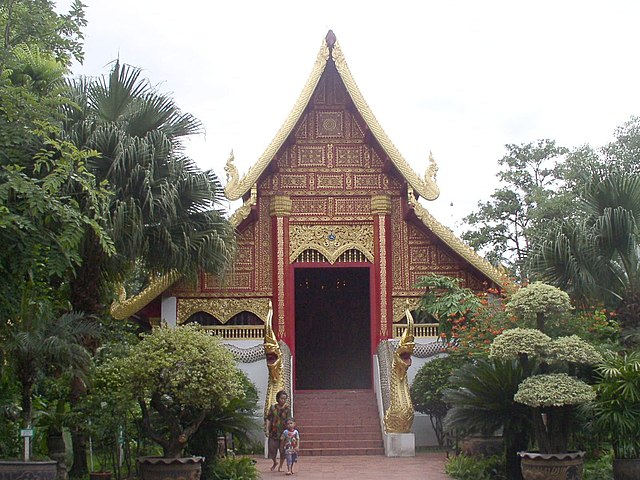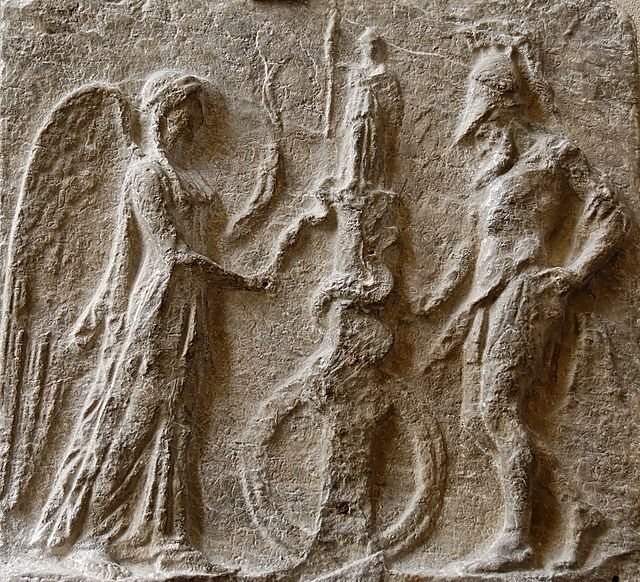The Emerald Buddha is an image of the meditating Gautama Buddha seated in a meditative posture, made of a semi-precious green stone, clothed in gold. and about 66 centimetres (26 in) tall. The image is considered the sacred palladium of Thailand. It is housed in the Temple of the Emerald Buddha on the grounds of the Grand Palace in Bangkok.
The Emerald Buddha adorned in winter season attire
A chedi at Wat Pa Yia in Chiang Rai.
The image first appeared in 1434 at Wat Phra Kaew, Chiang Rai
From 1434 to 1468 it was housed at Wat Phra Kaeo Don Tao, Lampang
Palladium (protective image)
A palladium or palladion is an image or other object of great antiquity on which the safety of a city or nation is said to depend. The word is a generalization from the name of the original Trojan Palladium, a wooden statue (xoanon) of Pallas Athena that Odysseus and Diomedes stole from the citadel of Troy. It was supposedly later taken to the future site of Rome by Aeneas, where it remained until perhaps transferred to Constantinople and was lost after the Empire converted to Christianity.
The Theotokos of Vladimir, tempera on panel, 104 x 69 cm, painted about 1130 in Constantinople, and protectress of Vladimir and later Moscow
Nike (Victory) offers an egg to a snake entwined around a column surmounted by the Trojan Palladium. (Marble bas relief, Roman copy of the late 1st Century AD. After a neo-Attic original of the Hellenistic era.)
10th-century icon of the Image of Edessa, with King Abgar V of the legend shown as Emperor Constantine VII who brought the image to Constantinople in 944
The Luck of Edenhall, 14th-century Islamic glass, a palladium for its English owners








